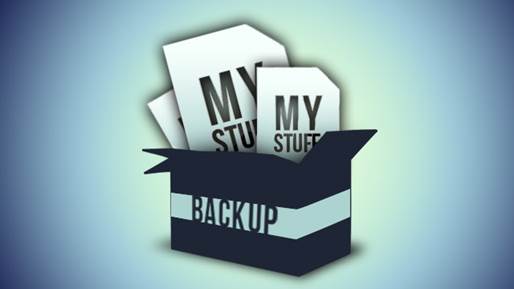Chances are, if you’re using a
smartphone or tablet properly, you are using cloud based services without even
knowing it. If you aren’t, then you really aren’t getting the most out of your
mobile device. Don’t worry, What Mobile is here to help.
Mobile cloud computing basically means that
tasks and data are stored off device, on the internet, rather than installed on
individual devices.
This means your information, such as
internet bookmarks, documents, music and even movies do not need to be copied
or stored on every piece of technology you own. It gets uploaded to a storage
space on the internet and you can retrieve it at will on anything from your
iPad to your Samsung Galaxy S3 to your workplace computer (as long as they all
have an internet connections).
Modern cloud computing has moved beyond
this simple lockbox-type approach, and has merged into ‘services’ - these can
combine almost every element of computer or mobile device usage, from email to
social networking.
This can range from a company that lets you
store documents and photos, through to a restaurant website that saves your
eating preference in the cloud and offers you suggestions for your favorite
foods. This could be anywhere in the world, using GPS.
Most people would’ve experienced a form of
cloud usage pretty early on in their internet experience through web based
email, such as Yahoo Mail, Hotmail (now Outlook) and Gmail This is effectively
‘offsite’ cloud email rather than it being stored and sent from your hard
drive.
Ever been backpacking and Gmailed photos of
Machu Picchu to yourself so you could retrieve them when you got back to the
first world? You were effectively using Gmail as a cloud storage service for
your photos.

Modern
cloud computing has moved beyond this simple lockbox-type approach, and has
merged into ‘services’
Key uses for cloud
1.
Syncing address book contacts, web browser book
marks, user preferences and other personalization across all your devices — For
example, the Google Chrome web browser’s book marks will appear on your PCs
browser, your smartphone and your tablet. More importantly, a contact’s details
saved from an email on your PC Wi-Fi appear in your phone’s address book
without you having to re-enter that data on every device in front of you.
2.
Photos — through inbuilt programs such as
Apple’s Photo Stream, any photos taken on your iPhone will be downloaded to
your tablet automatically. Very handy for those, that needs to do photo
editing.
3.
Work — Users of Microsoft’s Office 365 or
Google’s Docs will appreciate this wholeheartedly. Any documents written in
Google Does go straight into the cloud and can be retrieved at any time for
editing very useful for long trips to get work done on the laptop or tablet, or
if you just need to type a few quick notes into your smartphone while on a site
visit. Office 365 takes this further (it’s also a subscription service) and is
integrated directly into Microsoft Office for ‘lightweight’ editing offsite.

Very
useful for long trips to get work done on the laptop or tablet
4.
Social Media — while not traditionally grouped
with cloud computing in most minds, Facebook and Twitter follow all the cloud
principles all your data, photos and posts are stored offsite in a company’s
server banks. These raise more privacy issues, as due to the Terms and
Conditions you usually sever complete ownership rights when using these sites
(see Privacy).
5.
Backup — The most obvious, and an integration of
all of the above. Quite simply, storing vital documents and treasured memories
in the cloud means that if your house is burned down, or your phone stolen by
thugs, the information is untouched. With Apple devices, for example, you can
literally walk into a store the next day, buy a replacement, connect to the
internet and your phone will be as it was at the last backup contacts, photos,
documents, emails and all. Most cloud apps (such as Dropbox) now have desktop
clients, so you can simply drag and drop files to a folder, and they will
automatically sync across all your devices.

Quite
simply, storing vital documents and treasured memories in the cloud means that
if your house is burned down, or your phone stolen by thugs, the information is
untouched
6.
Save for later — One of the best features of the
Cloud is one of the simplest: there are a variety of apps (see box) that allow
you to save your online experience for later. Simply bookmark a page, and
Instapaper will save web pages for later, it even morphs all your saved
bookmarks into a newspaper format.
Privacy issues
One of the scary issues for those using Cloud
Services is simple - you are placing your trust in the hands of a foreign
entity - namely a faceless company, probably hail way across the world, storing
your private documents and even your own personality data.
If their security fails, yours does. We
have seen this a few times recently, such as Sony Playstation’s servers being
hacked (hundreds of thousands of user profiles and credit card details were
leaked on to the Internet). Is this somewhere you really want you, or your
company’s private financial cats (such as your monthly budgets, or confidential
HR documents), stored, out of your control?

Hundreds
of thousands of user profiles and credit card details were leaked on to the
Internet
It also raises legal questions - whereas in
the UK you can pursue legal action against an accountant who loses your papers
(actual physical papers we mean), and even gain insurance for these kinds of
situations, the laws concerning Cloud companies and their duty of care for your
data is still unclear internationally.
How does Aunt Maude from Hull go after
multinational Google (based in California) for breach of privacy if her bank
statements have been stolen by a third party?